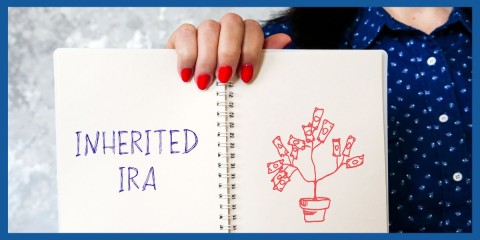How To Determine How Much Your Business Is Worth
There are many reasons why you may want to determine how much your business is worth. 
You may be approached by a proposed buyer. You may want to sell and invest the money for your retirement. You may want to know it for insurance purposes.
Or you may want to fund a totally new venture. As a seller of your business, if you want that business to sell, the first thing you want to do is be ready to negotiate. Here are some tips to help prepare you to negotiate:
Tips for Selling Your Business
- Make sure your accounting is in order. When your figures aren’t in proper order, it makes it harder to estimate your business’s worth, and it slows down the buying process. The last thing you want is for figures to look confusing or inaccurate.
- Make sure you have the appropriate documents you’ll need: The last two years of business tax returns, current profit and loss statement, and a current balance sheet.
- Provide projections for the future of your business. Present a case that your revenues and profits will grow, and this will properly position your business down the road. Provide both best- and worst-case scenarios so the seller can be aware of any challenges and opportunities.
- Do an external examination of your business. Just as house sellers spruce their house up to make it appealing on the outside and inside, you should do the same for your business. Review your business externally by examining your website, sales materials, etc. to ensure everything positively reflects your business. Make sure everything is up to date.
- Brokers are good to have during a business sale. They are often able to get more money from the sale than if you go it alone. It’s always good having someone experienced at the table to help maximize your business value.
- That business is your baby. You’ve put a lot of time into it and probably grew it from its infancy. Just remember, the numbers don’t lie. Try not to get too emotional if the value doesn’t match with what you feel it should be, or if the current market doesn’t match all the sweat and tears you put into it.
Whatever your reason for wanting to determine how much your business is worth, we can help.
How Do I Determine How Much My Business Is Worth?
Regardless of why you want to determine how much your business is worth, it’s always good to know your business’s value.
There’s no one hard and fast rule for determining how much your business is worth. There are different popular methods you can use to get you to the answer you’re seeking.
Whatever process you use is called business valuation. Business valuation is a process used to determine the value of a business or to determine how much your business is worth.
We’ll share six different ways you can reach the figure you’re seeking, so you can choose the one that’s best for you:
- Value Company Assets or Asset Method
- Discounted Cash Flow (DCF)
- EBITDA Valuation or Income Method
- Risk-Based Valuation
- Business Valuation Calculator
- Seller’s Discretionary Earnings (SDE)
Factors To Consider for a Business Valuation
Getting to the bottom line to determine how much your business is worth can take multiple factors, and it’s important you know how to access those figures, locate them on tax forms and other financial statements, or at least calculate them based on other figures.
Some of the most common factors are net profit, growth trends, liabilities, future cash flow, earnings, interest expense, income tax expense, website traffic, age of business, online and offline sales network, competitors, company assets.
Some other important factors to consider when assessing your valuation include the size of your business, your team, expected growth and market risk.
Valuation Methods
Value Company Assets
This is one of the most basic formulas for valuing a business. Look at what the business owns. This includes patents, inventory, buildings, equipment, etc., and subtract liabilities.
From this, you value the business accordingly. To the person buying your business, this lets them know at least the worth of the assets the business has. And it’s less they would need to invest in assets if they were starting from scratch.
Although this formula may seem straightforward, remember when it comes to assets, there are tangible and intangible assets. And you will want to know how to calculate each, especially the intangible.
Know your business’s assets because assets add value to any business. A business is worth more on the market when it has many assets. Assets will affect the multiplier (read more about that below) in a positive way, especially intangible assets.
Your assets will consist of anything that the business is able to sell for cash. Tangible assets include things like machinery, property and inventory, furniture, fixtures, equipment, real estate, and company vehicles. Intangible assets are things like patents, trademarks, brand recognition, reputation, recipes, and copyrights.
Discounted Cash Flow (DCF)
With this formula, you’re looking at what your business will make in the future. The buyer is estimating future cash flow and what it is worth to them today. They consider the cost of capital and how stable and predictable the income should be.
To conduct a DCF analysis, estimates must be made about future cash flows and the ending value of the investment, equipment, or other assets. An appropriate discount rate will also need to be determined.
The discount rate will change spending on the business. The buyer would need to get this information from the company’s risk profile. If this is too complicated to determine, it may be worth applying a different valuation method.
Since this method focuses exclusively on cash flow, many business owners favor it. However, the estimates and projections that are only based on estimates can be off base in some instances.
EBITDA Valuation
EBITDA stands for “Earnings Before Interest, Taxes, Depreciation, and Amortization.” EBITDA gives you an idea of your business’s profitability and its current ability to pay off debts. You’ll need to know figures for:
- Earnings (net income or net loss)
- Interest expense (interest income)
- Income tax expense (tax credit)
- Depreciation and amortization
Add all line items that expenses and subtract the income line items. After that, add the total to the net income figure. The result is your EBITDA. This is good when comparing to other businesses. But when used incorrectly, it can have a negative impact on your returns.
Risk-Based Valuation
Risk-Based Valuation is based on the risks that make your business appear more or less attractive. These risks include sales and marketing, competition, reputation, social, technology, management, financing, exit risk, economic risk, legislative/regulatory, international/currency, labor, and cap table risk.
Each risk needs to be rated to the degree of risk it carries and then quantified into a value. This is probably the least common of all the valuations in this article. But it can be helpful for new businesses without any history.
Business Valuation Calculator
Sometimes it’s just easier to feed an automated system so it can present you with the numbers you need. Calculators are awesome! And using a business valuation calculator is fast, simple, and most importantly, will get you that ballpark figure you need to get the process started.
There are also different valuation calculators to consider. Most vary by industry. Risks and opportunities are not the same for all industries, so there may be specific information needed based on the industry. These specific industry factors can be significantly important to your business’s value.
Seller’s Discretionary Earnings (SDE)
Seller’s Discretionary Earnings (SDE) is a common method to determine how much your business is worth. This formula gives a better picture of the value of a company. That’s because it comprises profit before taxes and interests, and expenses and benefits.
It helps potential buyers to get a better picture of their expected return on investment. When potential sellers know the discretionary earnings, it allows them to maximize the value of the business before negotiations even start.
It also helps them to make the right decisions when choosing what expenses and incomes to include. There are three steps to determine how much your business is worth using the SDE method:
1. Calculate the SDE.
SDE is the pretax income of your business before certain other things like expenses that are not made in cash, owner’s compensation, interest expense and interest income, and one-time, non-recurring expenses. These items are added to, or deducted from, your net profit.These adjustments are known as “add-backs.” These add-backs are all or a portion of expenses that are added back to net income to place the figures as closely as possible to the true economic earnings of the business. Items added to net income to calculate SDE include:
- Non-cash expenses like depreciation and amortization - This is the same as the EBITDA shown above. This gives an overview of the return on investment once the business is acquired)
- Non-essential business expenses or income - This may not be related to the business’s core operations, like personal travel, automobile expenses, personal expenses, charitable donations, non-business activities, etc.
- One-time expenses -These are expenses that have only been paid once and are not recurring. This can include application fees, legal fees, purchase of a business license, etc.
- Adjusted expenses.
- Salary of one full-time owner.
- Owner’s payroll taxes.
2. Determine Your SDE Multiplier.
BizBuySell data reports that average cash-flowing businesses sold for more than twice their SDE. But businesses have been known to sell for more than that. Some sell for up to four times what their SDE is. This is what is called the “SDE multiple” or “multiplier.”
There are two different types of multipliers - the standard industry-specific multiplier gives you a general value based on industry averages. The specific business multiplier is more specific with its value being based on the variable factors of each individual business.
Some of the factors that contribute to finding the right SDE multiple are: industry, company size, owner risk, tangible and intangible assets, market risk, and thus can make it difficult.
Of all the factors, the biggest to influence SDE are usually owner risk and industry outlook. It’s not easy for a business to transfer ownership if it is highly dependent on one or more owners. The SDE is usually higher if the business you’re selling is in an industry or area that is expected to grow.
3. Add Business Assets and Subtract Business Liabilities
Account for assets and liabilities that are not included in the SDE. Usually, the seller retains liabilities, but the terms of a deal can vary.
Either of these methods can provide you with the figure you need to focus on starting the negotiations you need to begin the selling process for your business. Many businesses may use any one of the mentioned methods or combine more than two methods to arrive at the most accurate valuation.
Even if you decide it’s not a good time to sell, consider doing a valuation annually so you always know what future opportunities await for you and your business.
Let a Financial Professional Help
Whichever method you use, you want to ensure that you don’t short-change yourself, and you also want to ensure that if you plan to retire off of your sale, that you price it just right and have the plans in place for what to do next. Pricing too high can scare away buyers, and pricing too low will hurt your own bottom line.
At NextGen Wealth, trust and communication are at the forefront of what we do. We understand your needs and we are passionate about helping you to get to where you are trying to go financially. Whether it’s retirement, college education, starting new business ventures, we understand and know how to help. We work best with:
- Individuals close to retirement
- Individuals recently retired
- Individuals who know they need a trusted professional


